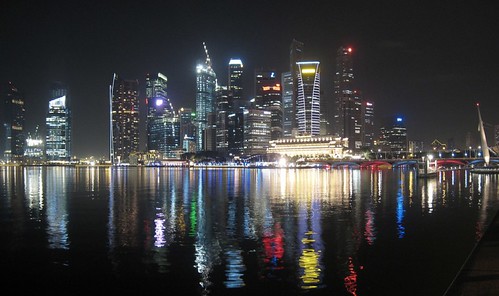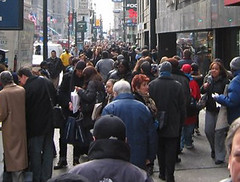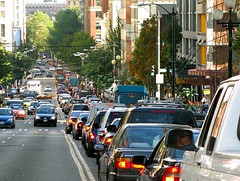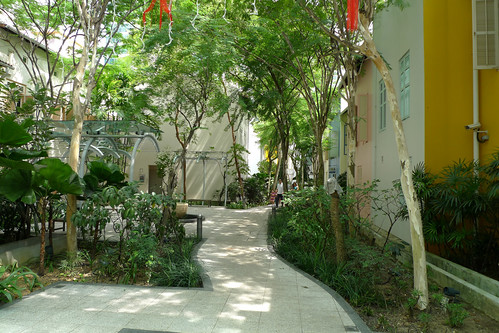10 principles for making high-density cities better

Posted February 13, 2013 at 1:32PM
Getting the right city density – generally expressed in the US as people per square mile or homes per acre – to support sustainable and pleasant living is one of the trickiest problems we face as we address the future of our communities. The typically low densities of suburban sprawl built in the last half of the 20th century, despite their popularity at the time with a considerable share of the market, have been shown by a voluminous body of research to produce unsustainable rates of driving, carbon emissions, pollution. stormwater runoff, and adverse health impacts.
Yet the highest densities can bring their own set of problems, including noise, traffic and even pedestrian congestion (perhaps more a matter of pleasantry than environmental problems per se), local hotspots of runoff and air pollution, and loss of contact with nature, among others. I’ve argued repeatedly that, if we want market preferences to continue trending in the direction of walkable sustainability, we must be more sensitive to these concerns. Finding the right density and accompanying urban features for the right place is critical.
To an extent, this is what the new urbanist transect is about. I have my issues with the lower-density parts of the transect and with the extent of prescriptiveness in some of the zoning codes it has spawned, but frankly neither the environmental community nor smart growth advocates have even attempted to sort this out.
I’m not sure it is fair for us to criticize the best of the answers that is out there so far without coming up with a better alternative. Indeed, the bulk of our advocacy seems limited to “density + transit + mixed-use + bike lanes + making driving and parking less attractive”; more of each is always better; and the rest is someone else’s problem.
I don't see it that way. In truth, we need more sophisticated and nuanced answers. They may be elusive and often site-specific, but they are also critical to building a better world for our children, ourselves, and the planet.
Something to bear in mind in our search for those answers is that the same research showing low-density sprawl to be horrible for rates of driving, emissions, and runoff also shows diminishing returns in improving those rates after moderately high densities are reached. And relatively high-density places can still be unsustainable sprawl, depending on the context. Myself, I tend to prefer incremental and moderate increases to density in the places that are not already sufficiently dense, and accompanying those increases with important mitigation of density’s local impacts.
All that said, there are cities and districts that are and will be truly high-density by almost anyone’s definition. What are the things we should include to make those places as sustainable and hospitable as possible? The Urban Land Institute, an industry association and think tank, has come up with some answers. The following are from ULI’s recently released report, 10 Principles for Livable, High-Density Cities:
- Plan for long-term growth and renewal –“A highly dense city usually does not have much choice but to make efficient use of every square inch of its scarce land. Yet city planners need to do this in a way that does not make the city feel cramped and unlivable.”
- Embrace diversity, foster inclusiveness – “There is a need to ensure that diversity is not divisive, particularly in densely populated cities where people live in close proximity to one another.”
- Draw nature closer to people – “Blending nature into the city helps soften the hard edges of a highly built up cityscape and provides the city dwellers pockets of respite from the bustle of urban life.”
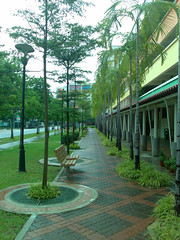 The report cites Singapore, whose Centre for Livable Cities co-sponsored the report, as a dense city that has adopted “a strategy of pervasive greenery” and “transform[ed] its parks and water bodies into lifestyle spaces for community activities . . . Nearly half of Singapore is now under green cover, which is not only aesthetically pleasing, but also improves the air quality and mitigates heat from the tropical sun.”
The report cites Singapore, whose Centre for Livable Cities co-sponsored the report, as a dense city that has adopted “a strategy of pervasive greenery” and “transform[ed] its parks and water bodies into lifestyle spaces for community activities . . . Nearly half of Singapore is now under green cover, which is not only aesthetically pleasing, but also improves the air quality and mitigates heat from the tropical sun.” - Develop affordable, mixed-use neighborhoods – “The ease of living in a compact neighborhood that is relatively self-contained can add to the pleasure of city living. With density, it becomes more cost effective to provide common amenities.”
- Make public spaces work harder – Often, parcels of land that adjoin or surround the city’s infrastructure are dormant, empty spaces . . . The idea is to make all space, including infrastructural spaces, serve multiple uses and users.”
- Prioritize green transport and building options – “An overall reduction in energy consumption and dependence adds to city sustainability.”
- Relieve density with variety and add green boundaries – “A high-density city need not be all about closely packed high-rise buildings. Singapore intersperses high-rise with low-rise buildings, creating a skyline with more character and reducing the sense of being in a crowded space.”
- Activate spaces for greater safety – “Having a sense of safety and security is an important quality-of-life factor.”
 Cities should improve visual access to public spaces to maintain “eyes on the street” and help keep neighborhoods safe.
Cities should improve visual access to public spaces to maintain “eyes on the street” and help keep neighborhoods safe. - Promote innovative and non-conventional solutions –“As a city gets more populated and built up, it starts facing constraints on land and resources, and has to often look at non-traditional solutions to get around the challenges. To ensure sufficient water, Singapore developed reclaimed water under the brand name NEWater-to drinking and industrial standards.”
- Forge “3P” (people, public, private) partnerships – “With land parcels in close proximity to one another, the effects of development in one area are likely to be felt quickly and acutely in neighboring sites. The city government and all stakeholders need to work together to ensure they are not taking actions that would reduce the quality of life for others.”
ULI says that the ten principles in the publication were developed during two workshops hosted in 2012 by the Singapore Centre for Livable Cities and ULI Asia Pacific, bringing together 62 thought leaders, experts and practitioners from different disciplines related to urban planning and development. The full report may be downloaded here.
Readers, please take note of this message I received by Dr. Limin Hee, Associate Director, Centre for Liveable Cities, Singapore, on February 28:
"While we realised that you may have been alerted to the piece by our collaborator ULI, may we point out that although the article did mention Centre for Liveable Cities at the end, it was not clear to readers that the effort is indeed a joint research collaboration between the ULI and our Centre (CLC). We hope you would be able to rectify this in your post as soon as possible."
Related posts:
- Mitigating the environmental paradox of smart growth: softening urban density (November 26, 2012)
- Eight components of a "healing city" (January 12, 2012)
- How much urbanism is enough? (January 13, 2011)
- Watershed benefits of smart growth duplicate transportation benefits, according to recent research (June 1, 2010)
- Three visual perceptions of residential density (May 21, 2010)
- Using urban density to support parks, and vice versa (March 9, 2010)
- Guess the density – you might be surprised (February 5, 2010)
Move your cursor over the images for credit information.
